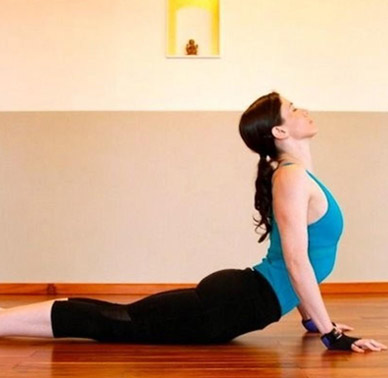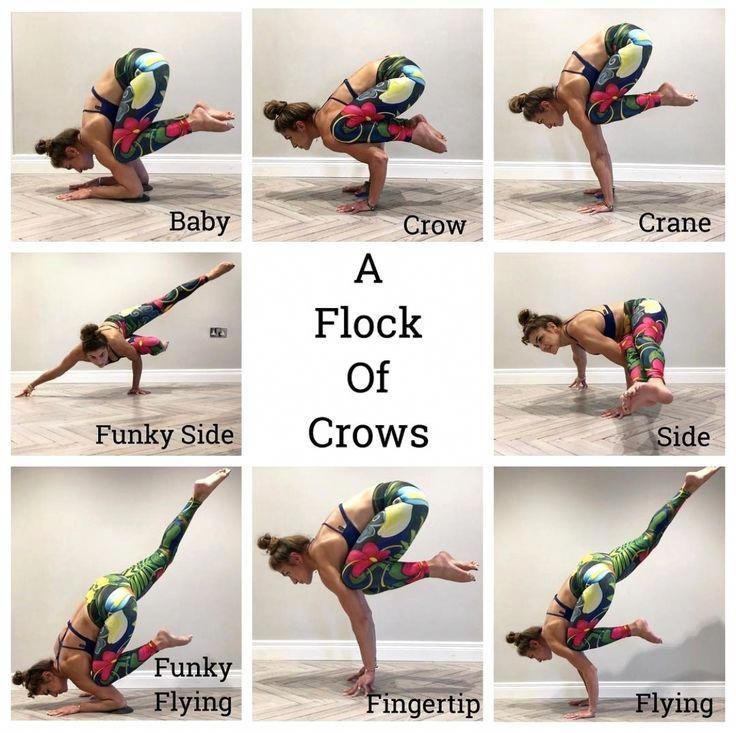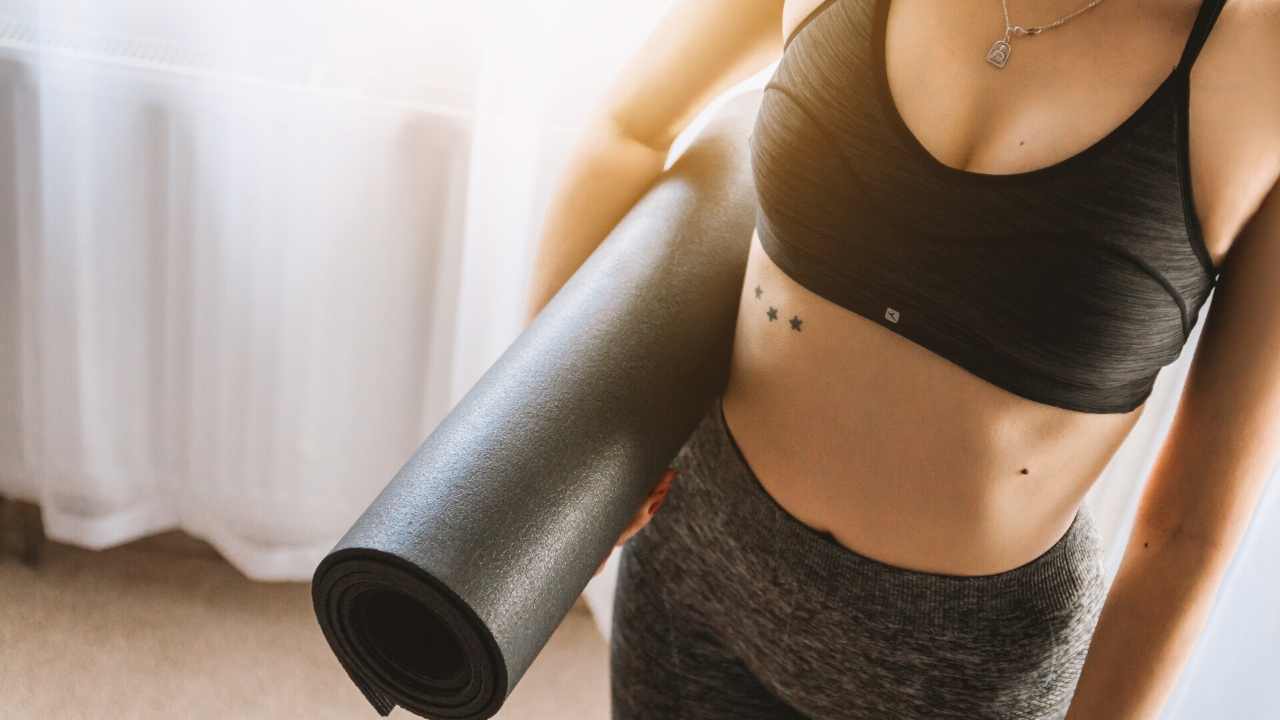
The standing leg raise is one of the easiest yoga poses for beginners. Standing at hip-width, stand with your feet wide apart. Then extend your arms to the sides. Reach your other hand toward the sky, looking upward at your fingertips. Keep your hands shoulder-width apart. The pose is beneficial for your back, thighs, and hamstrings, while toning your legs and building core strength. To be able to do this correctly, you need to practice the pose six to eight time.
The staff pose, which is a seated variant of the mountain pose and helps beginners understand the alignment principles for seated poses. For this asana you will need to activate your leg muscles and lift your chest while relaxing the shoulders. This will allow your shoulders to relax, which will cause a slight bend in your knee. You can modify your position by placing a prop above your knees.
The downward-facing-dog pose is a great way to end a yoga session. This pose is a great place to begin if you are just starting out. It's important to keep your hips high and stretch your heels toward the floor. You don't need to touch the floor, but it does stretch the outer hips. Bend your knees so that your hips are parallel to the floor.

The corpse poses is a great choice for transition poses. While it can be challenging to get your body to a relaxed state at first, it becomes easier over time. Take the time to check your posture every day and give yourself plenty of space. This will help you get the most out your practice. Regular yoga practice will lead to both mental and physical improvements. Daily yoga practice has many benefits.
For beginners, the triangular pose is one of most preferred. It strengthens the chest and hamstrings, and improves posture. It's an ideal starting point to any beginner's yoga practice. Apart from the triangle, the Seated Spinal Twist for beginners is another popular yoga position. This stretch helps strengthen the legs while strengthening the spine and upper back. It's also a good way to build strength in the back.
The twist pose introduces you to the many twists of yoga. The twists can lengthen your bottom leg and alleviate back tension. If you're prone to back pain, this pose may be difficult, but it will help you build your back and strengthen your legs. This is an excellent exercise for beginners. If you aren’t sure where or how to start, take a look at the child’s pose. Once you are familiar with the cat, it will be easy to perform the pose in any position.
A good starting pose is the forward bend. It is an all-over stretch that will help stretch your calf muscles as well as the hamstrings. One of the most basic yoga poses, the bridge, should be your focus during a yoga session. This will improve your flexibility and balance. It can be difficult if your are not familiar with basic yoga. This pose can be done with the guidance of a teacher.

For beginners, the child’s pose is important. This pose will increase your strength and flexibility, as well as improve your posture. Many of the yoga poses for beginners are built on one another. To build on the foundational poses, it is essential that you start with them. Keep practicing! Don't forget to practice these poses even if you are a beginner. You can modify them to your liking.
The popular yoga pose for beginners is the downward dog. This pose is meant to strengthen the back. You can make this pose more comfortable by stretching your shoulders and thighs. Next, extend your arms and bend at the sides. Then release your arms. The pose should be held for no less than thirty seconds. To improve your movements, you may also want to try other versions. Then, practice the poses for beginners until you master them all.
FAQ
Do Men Need A Gym Membership?
Men do not need a gym membership. If you sign up for a gym, however, your money will be much more valuable.
Most gyms offer free trial members, which allows you to use the facilities without paying anything.
You can use the gym at any time you want, and it doesn't cost anything. Your membership can be cancelled at any time you choose to love it or not.
How many calories should I consume daily?
It varies from one person to another. On average, between 2000 and 2500 calories a day. You need to determine how many calories you need based on age, gender, height, weight, activity level, and lifestyle.
What is the best work out for men aged 40+?
For older men, the best workout usually gives them more energy and improves their stamina.
It is important for you to know that over 40s experience a reduction in testosterone which can lead to lower sex drive.
However, this doesn't mean you cannot still enjoy physical activity. Studies have shown that some men can get more testosterone from regular aerobic exercise.
An aerobics routine is a great way to increase your sexual performance.
Statistics
- Cardmembers earn 5% Back at Amazon.com with a Prime Credit Card. (amazon.com)
- An estimated calorie range for moderately active adult males falls between 2,200 to 2,800 calories per day, depending on age. (eatright.org)
- According to the American Academy of Dermatology (AAD), men over 50 are at a heightened risk of developing it. (healthline.com)
- The PRS enabled risk stratification for overall prostate cancer and lethal disease with a four-fold difference between men in the highest and lowest quartiles (HR, 4.32; 95% confidence interval [CI], 3.16-5.89). (pubmed.ncbi.nlm.nih.gov)
- Are You One of the 20% of Guys (mh.co.za)
External Links
How To
What nutrients does a person need every day?
Men need healthy growth and development. Your body needs vitamins, minerals and nutrients as well as carbohydrates, proteins, fats, carbohydrate, fiber, and other essential components.
Specific nutrients are also required by the male body at different times during the day. You can see that your body uses energy to make hormones. When you get up, protein is used to repair and build muscle.
Your body uses the night to break down fat and store extra energy as glucose. Your body still requires sufficient nutrients and calories even though it needs less calories. If you feel hungry, you may consider having a snack during the evening.
When you work out, you need adequate levels of carbs and protein to fuel your muscles. You may feel sore muscles if you exercise hard.
To prevent this, you should eat carbs as well as protein within the first two hours after training. Your body will breakdown stored glycogen and provide you with glucose for energy.
Additionally, it is important to eat protein right away after your workouts are over. This prevents muscle tissue from being broken down while you are sleeping.
Your body makes lactic acid when you are doing intense physical activities. The body produces lactic acid when there is too much activity. This can cause fatigue. You can avoid this by eating carbohydrates-rich foods like fruits and veggies.
Carbohydrates offer your body the energy it needs for recovery from exercise.
Your diet may include lean meats like fish, eggs, milk cheese, yogurt or beans as well as lean proteins such as fish, eggs, egg yolks, cheese, yogurt, bean, peanuts and seeds.
All of these foods contain high quality protein. Protein is important for muscle growth and repair. Protein also supplies the amino acids your body requires to make sex hormones, such as testosterone.
For healthy skin, hair and joints, it is important to eat enough fats. Healthy men need between 20% and 35% of their total caloric intake from fat.
Fat is good for your heart and helps you fight cancer. It helps keep your brain working properly.
Most of the fat you need can be obtained from vegetable oils, including sunflower oil (or soybean oil), peanut oil, peanut oil, soybean oil, and peanut oil.
These oils are high-in monounsaturated, unsaturated fatty acid (MUFAs). MUFAs reduce cholesterol and inflammation. They protect your cells and prevent damage from free radicals.
Saturated fats (SFAs), are found mainly in animal products such as meat, milk products, and butter. SFAs raise LDL ("bad") cholesterol and increase triglycerides. They are also good for weight loss and belly fat.
Plant-based fats such as vegetable oils, seeds, nuts and grains contain polyunsaturated (PUFAs). PUFAs reduce inflammation and improve cardiovascular function. They are also good for controlling blood sugar and cholesterol.
Erectile dysfunction can often be a problem for men who have low HDL ("good") levels of cholesterol. Consuming high amounts of saturated fats can increase bad cholesterol and lower good cholesterol.
Men who eat large quantities of red meats or pork may develop prostate problems. High temperatures can cause nitrates to become nitrosamines. These compounds can cause cancer.
Most processed meats contain nitrites and other harmful chemicals. Avoid them.
The American Heart Association recommends limiting red meat intake to two meals per week. Instead, choose poultry or fish, beans, tofu and whole grain bread.